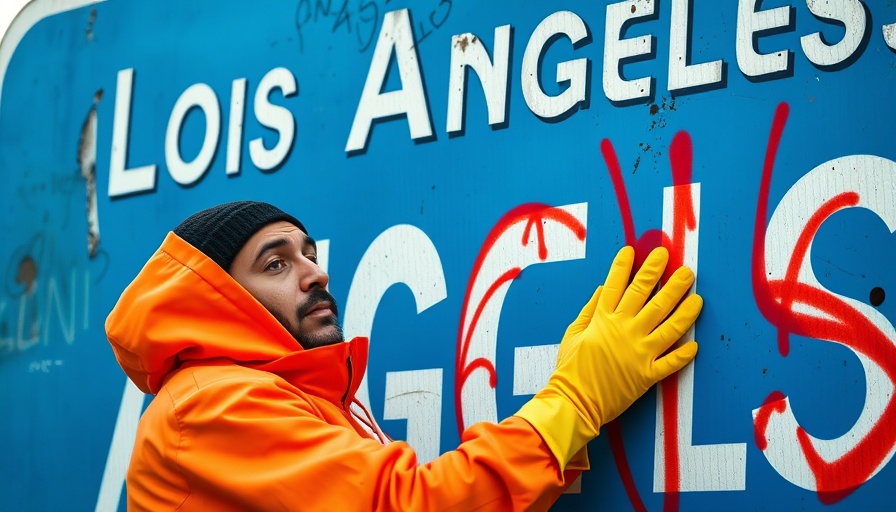
Graffiti Cleanup Efforts Amid Protests in Los Angeles
In a vibrant city marked by diversity, Los Angeles is currently the epicenter of significant protests against Immigration and Customs Enforcement (ICE). These demonstrations are part of a broader national debate on immigration policies, as campaigns against ICE's role in deportations grow louder. The protests have not only sparked discussions but also led to considerable damage to city property, prompting immediate cleanup efforts from local authorities.
The Societal Impact of Anti-ICE Protests
The protests in Los Angeles reflect a deep-seated frustration from many communities, especially among immigrant rights advocates. The large-scale demonstrations have brought attention to the often-polarizing views on immigration reforms, making it essential to understand the societal perceptions surrounding these issues. Supporters argue these actions are necessary to support human rights and provide a voice to the voiceless, while critics voice concerns over property damage and public disorder as counterproductive to the movement's goals.
Parallel Observations from Other Cities
Similar protests have emerged in cities like San Francisco and New York, highlighting broader sentiments against government initiatives viewed as unjust. These cities have also seen instances of property damage, leading many officials to initiate cleanup operations, highlighting the challenge of balancing activism with the rule of law. This raises an important point: while voicing dissent, how can communities minimize impact on the public spaces they occupy?
The Future of Activism in Urban Spaces
As Los Angeles grapples with the aftermath of violent protests, the question remains: what will the future of these protests look like? With ongoing debates around immigration and national security, activists may need to consider developing new strategies that foster dialogue and maintain public order. Future protests could leverage social media more effectively to mobilize supporters while being mindful of public property.
Understanding the Costs of Public Dissent
The recent protests have raised questions about the real costs associated with societal dissent. Cleanup efforts alone can run into thousands of dollars, burdening local governments strained for resources. Community leaders are urging all sides to engage in constructive dialogue, focusing on policies over protests, to create sustainable change that does not impose additional taxes or stresses on public services.
Exploring Community Solutions
In the face of these challenges, solutions must be found through community engagement. Organizing town hall meetings or forums to address immigration issues can empower citizens, leading toward actionable measures that may prevent future disputes from escalating into violence. By fostering an environment where citizens feel they are being heard, cities may find a way to channel the energy of protests into positive change.
Concluding Thoughts: A Call for Dialogue
As Los Angeles initiates cleanup efforts, it's crucial for activists and community leaders to reflect on the methods of protesting against ICE and immigration issues. Moving forward, fostering constructive dialogue and understanding could lead to solutions that satisfy the community's desire for reform without sacrificing public safety or resources. While expressing dissent is a powerful tool of democracy, it's equally important to consider the repercussions that come with it.
 Add Row
Add Row  Add
Add 



Write A Comment